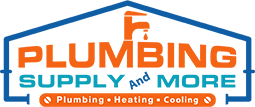Welding, Soldering & Brazing
-
-
Cylinder Regulator, Pressure Flow Hybrid Single Stage, Nitrogen cylinder gasSKU: 1995719$236.61 38% off $383.60
-
Auto Start Stop Flame Control Swivel Torch, 12,200 BTUBrand: Harris Product GroupSKU: 2036111$108.00 40% off $178.91
-
-
Trigger Self-Lighting Air-Fuel Hand Torch with Adjustable FlameBrand: Harris Product GroupSKU: 2036109$120.52 40% off $199.65
-
Acetylene Line Hose With A and A Fittings, 3/16" x 12' - 200 PSIBrand: Harris Product GroupSKU: 2036108$32.04 37% off $50.69
-
Acetylene Cylinder Pressure Regulator, Single StageBrand: Harris Product GroupSKU: 2036107$101.86 40% off $168.74
-
Adapter for Changing B Tank to MC TankBrand: Harris Product GroupSKU: 2036106$18.79 38% off $30.50
-
-
Acetylene B Tank including #3 and #11 Acetylene TipsBrand: Harris Product GroupSKU: 2036104$333.40 41% off $567.42
-
Acetylene Weld Handle with Adjustable ValveBrand: Harris Product GroupSKU: 2036103$78.99 40% off $130.85
-
Welding, Soldering, and Brazing are critical techniques used for joining materials in various applications. Each method offers unique advantages depending on the materials and requirements of your project. Understanding the differences between these processes helps you choose the right one for your specific needs, whether for structural applications, electronics, or decorative work.
Key Uses and Differences:
- Welding: This process involves melting and fusing metals together, making it ideal for structural applications where a strong, permanent bond is required. It is commonly used in construction, automotive repair, and heavy machinery.
- Soldering: Uses a filler metal with a lower melting point to join materials, making it suitable for electronics and delicate components. It’s used to create electrical connections and assemble small, precise parts.
- Brazing: Similar to soldering but uses higher temperatures and filler metals, creating strong joints without melting the base metals. It is often used in plumbing, HVAC systems, and for joining dissimilar metals.
Frequently Asked Questions About Welding, Soldering, and Brazing
- What is the difference between welding, soldering, and brazing, and when is each process used?
- Welding, soldering, and brazing are distinct joining techniques:
- Welding: Fuses metals by melting and bonding them directly, suitable for structural and heavy-duty applications.
- Soldering: Uses a lower-temperature filler metal to bond materials, ideal for electronics and delicate tasks.
- Brazing: Involves higher temperatures and filler metals to join materials without melting them, used for plumbing, HVAC, and joining dissimilar metals.
- What are the safety precautions and equipment needed for welding, soldering, and brazing?
- Safety is essential for all these processes:
- Welding: Requires proper ventilation, welding machines, helmets, and protective clothing to shield against high temperatures and UV radiation.
- Soldering: Involves soldering irons, flux, and appropriate ventilation to avoid exposure to fumes and high heat.
- Brazing: Uses torches and protective gear to manage high temperatures and ensure safety.
- How do I choose the right method and materials for welding, soldering, or brazing for my specific project?
- The choice of method and materials depends on:
- Materials Being Joined: Different methods are suitable for different materials.
- Required Strength: Welds are stronger, while brazing and soldering are used for different strength and precision needs.
- Operating Conditions: Consider the environment and use case of the final product.
Explore our extensive range of products and equipment for welding, soldering, and brazing. Whether you're working on a large-scale construction project or delicate electronic repairs, we offer the tools and materials you need to achieve precise, reliable results. Browse our selection to find high-quality items that meet your specific requirements and enhance your project outcomes.













